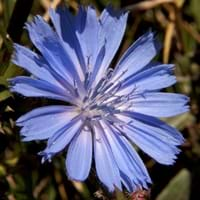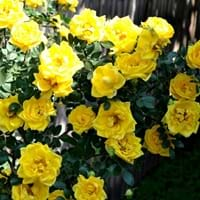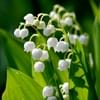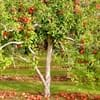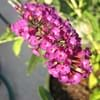Life Span
Perennial
Perennial
Type
Flowering Plants, Shrubs, Vegetable
Perennial
Origin
Mediterranean
Eastern Europe, Western Asia
Types
Belgian Endive, Red Belgian Endive, Curly Endive (a.k.a. Frisee), Escarole, Radicchio (Chioggia) and Radicchio (Chioggia)
Rosa Harisons Yellow, Rosa Persica
Habitat
Grassland, Mediterranean region, Wild
gardens, Pastures, Prairies, Terrestrial, Tropical regions
USDA Hardiness Zone
3-9
3-8
Sunset Zone
A1, A2, A3, H1, H2, 1a, 1b, 2a, 2b, 3a, 3b, 4, 5, 6, 7, 8, 9, 10, 11, 12, 13, 14, 15, 16, 17, 18, 19, 20, 21, 22, 23, 24
1a, 1b, 2a, 2b, 3a, 3b, 4, 5, 6, 7, 8, 9, 10, 11, 12, 13, 14, 15, 16, 17, 18, 19, 20, 21, 22, 23, 24
Habit
Clump-Forming
Oval or Rounded
Flower Color Modifier
Not Applicable
Not Available
Fruit Color
Brown
Non Fruiting Plant
Leaf Color in Spring
Green
Not Available
Leaf Color in Summer
Green
Not Available
Leaf Color in Fall
Green
Not Available
Leaf Color in Winter
Green
Light Green
Leaf Shape
Oblong
Pinnate
Plant Season
Summer
Summer, Fall
Sunlight
Full Sun, Part sun
Full Sun, Partial Sun
Type of Soil
Loamy, Sandy
Loam, Sand
The pH of Soil
Acidic, Alkaline, Neutral
Acidic, Neutral
Soil Drainage
Well drained
Well drained
Bloom Time
Summer
Early Summer, Summer, Late Summer, Early Fall
Tolerances
Not Available
Drought
Where to Plant?
Ground
Ground, Pot
How to Plant?
Seedlings
Grafting, Stem Planting, Transplanting
Plant Maintenance
Medium
Medium
Watering Requirements
Keep the ground moist but not water-logged, Prefer drip-irrigation instead of Over-head watering, Requires regular watering, Requires watering in the growing season
Form a Soil ring to water efficiently, Requires regular watering, Water twice a day in the initial period, Water when soil is dry
In Summer
Lots of watering
Lots of watering
In Spring
Moderate
Moderate
In Winter
Average Water
Average Water
Soil pH
Acidic, Alkaline, Neutral
Acidic, Neutral
Soil Type
Loamy, Sandy
Loam, Sand
Soil Drainage Capacity
Well drained
Well drained
Sun Exposure
Full Sun, Part sun
Full Sun, Partial Sun
Pruning
Cut or pinch the stems, Prune prior to new growth, Prune to stimulate growth, Remove dead or diseased plant parts, Remove deadheads
Prune if you want to improve plant shape, Remove damaged leaves, Remove dead leaves, Remove deadheads, Shape and thin as needed
Fertilizers
All-Purpose Liquid Fertilizer
All-Purpose Liquid Fertilizer, organic fertlizers
Pests and Diseases
Aphids, Loopers, Root rot, Viruses, Worms
Aphids, Bacterial Diseases, Mites, Slugs
Plant Tolerance
Drought
Drought
Flower Petal Number
Not Available
Not Available
Edible Fruit
No
Not Available
Foliage Texture
Medium
Not Available
Foliage Sheen
Matte
Not Available
Attracts
Butterflies
Not Available
Allergy
Not Available
no allergic reactions
Aesthetic Uses
Not Used For Aesthetic Purpose
Beautification, Bouquets
Beauty Benefits
Not Available
Not Available
Environmental Uses
Air purification
Air purification
Medicinal Uses
Cancer, Digestive disorders, Inflammation, Liver problems, Stomach pain
No Medicinal Use
Part of Plant Used
Leaves, Root
Flowers
Other Uses
Used as an ingredient in coffee
Showy Purposes, Used as Ornamental plant
Used As Indoor Plant
No
No
Used As Outdoor Plant
Yes
Yes
Garden Design
Not Available
Container, Cutflower, Feature Plant, Foundation, Mixed Border
Botanical Name
Cichorium intybus
Rosa foetida
Common Name
Blue daisy, blue dandelion, blue sailors, blue weed, bunk, coffeeweed, cornflower, hendibeh, horseweed, ragged sailors, succory, wild bachelor's buttons, and wild endive
Austrian briar, Persian yellow rose, Austrian copper rose
In Hindi
कासनी
Persian Yellow Rose
In German
Chicoree
Persian Yellow Rose
In French
chicorée
Persian Yellow Rose
In Spanish
achicoria
Persian Yellow Rose
In Greek
ραδίκι
Persian Yellow Rose
In Portuguese
chicória
Persian Yellow Rose
In Polish
cykoria
Persian Yellow Rose
In Latin
pancratium
Persian Yellow Rose
Phylum
Magnoliophyta
Not Available
Class
Magnoliopsida
Not Available
Family
Asteraceae
Rosaceae
Clade
Angiosperms, Asterids, Eudicots
Angiosperms, Eudicots, Rosids
Tribe
Cichorieae
Not Available
Subfamily
Cichorioideae
Rosoideae
Number of Species
Not Available
Not Available
Season and Care of Chicory and Persian Yellow Rose
Season and care of Chicory and Persian Yellow Rose is important to know. While considering everything about Chicory and Persian Yellow Rose Care, growing season is an essential factor. Chicory season is Summer and Persian Yellow Rose season is Summer. The type of soil for Chicory is Loamy, Sandy and for Persian Yellow Rose is Loam, Sand while the PH of soil for Chicory is Acidic, Alkaline, Neutral and for Persian Yellow Rose is Acidic, Neutral.
Chicory and Persian Yellow Rose Physical Information
Chicory and Persian Yellow Rose physical information is very important for comparison. Chicory height is 3.00 cm and width 1.50 cm whereas Persian Yellow Rose height is 70.00 cm and width 100.00 cm. The color specification of Chicory and Persian Yellow Rose are as follows:
Chicory flower color: Blue
Chicory leaf color: Green
Persian Yellow Rose flower color: Yellow
- Persian Yellow Rose leaf color: Not Available
Care of Chicory and Persian Yellow Rose
Care of Chicory and Persian Yellow Rose include pruning, fertilizers, watering etc. Chicory pruning is done Cut or pinch the stems, Prune prior to new growth, Prune to stimulate growth, Remove dead or diseased plant parts and Remove deadheads and Persian Yellow Rose pruning is done Prune if you want to improve plant shape, Remove damaged leaves, Remove dead leaves, Remove deadheads and Shape and thin as needed. In summer Chicory needs Lots of watering and in winter, it needs Average Water. Whereas, in summer Persian Yellow Rose needs Lots of watering and in winter, it needs Average Water.
